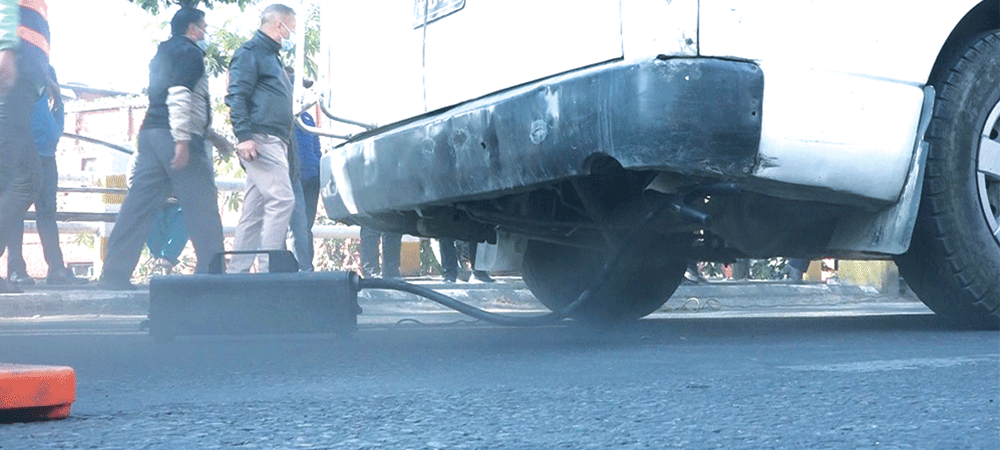- Friday, 26 December 2025
Strict inspection of vehicle emission from December 16
By A Staff Reporter,Kathmandu, Dec. 9: In a bid to reduce air pollution and its effects on people, the Department of Environment is going to start strictly inspecting the vehicle emission from December 16.
Issuing a notice on Thursday in the Gorkhapatra Daily, the Department informed that they will be conducting surprise inspection in different parts of the Kathmandu Valley. “If a vehicle is emitting harmful gases more than the set standards, they will be fined up to Rs. 100,000,” the notice reads.
The step has been taken under Section 41 of the Environment Protection Act, 2019. It states that the director general of the Department may impose a fine not exceeding one hundred thousand rupees on a person or body that violates orders of the government from the point of view of environmental protection.
The Department also stated that the strictness was a result of several vehicles failing the emission test in the past few days. Even the vehicles with green stickers, a pollution clearance certificate from the government authorities, failed the test.
On December 2, a surprise check was conducted in Babarmahal, Kathmandu, by a joint team of officials from the Department, Department of Transport Management and Kathmandu Valley Traffic Police Office.
Among 54 vehicles stopped for inspection, 38 failed the test. Among the 38 vehicles, 25 had other technical issues as well.
Similarly, on December 4, 11 vehicles failed the test and were sent to Transport Management Office, Ekantakuna, for further legal process.Also, on December 6, three more vehicles were penalised for failing the test.
Traffic Police informed that they confiscate the vehicle documents of such vehicles and ask them to repair the vehicles, pass the pollution test and pay the fine to retrieve the documents.
The World Health Organisation estimates that about 37,000 people die due to air pollution in Nepal annually. The pollution has been a major cause behind illness like cardiovascular diseases, ischemic heart disease, asthma attacks, acute and chronic bronchitis, respiratory symptoms, and pneumonia among others.
Similarly, a recent study by the World Health Organisation (WHO) in Kathmandu Valley showed that air pollution was the major cause of non-communicable diseases.
According to International Centre for Integrated Mountain Development (ICIMOD), various studies conducted in the valley show that vehicular emissions contribute to a significant proportion of the pollution load and ambient air pollution.
Moreover, experts argue that the situation is very unhealthy especially in winter period.
“Harmful gas emissions from vehicles and burning wastes rampantly is the major cause of air pollution in the valley. We also request public to inform us if anyone is found burning waste,” the notice of the Department reads.
Final Report on study of “Fuel Economy and Exhaust Emissions Measurement in LDVs and Policy Development and Awareness Programme” by Tribhuvan University Centre for Energy Studies published in 2021 by the Department of Environment showed that road transport emitted 4,732 kt (kilotons) of CO2, 227 kt of CO, 1.5 N2O, 8.7 kt of SO2, and 34 kt PM2.5 in the country in 2019. Moreover, Kathmandu valley alone emitted 9.6kt of PM2.5.
The study also stated that the unmanaged transport sector and fuel energy related greenhouse gases (GHG) emissions are one of the leading causes of deteriorating air quality in Nepal.
The step to inspect vehicles and penalising a hefty fine is expected to lead vehicles’ repair and maintenance. Regular maintenance will reduce GHG emissions to a great extent, officials informed.
Likewise, promotion of e-vehicles and implementing restriction of vehicles aged above 20 years is advised to help achieve the target of reducing GHGs. While e-vehicles are still expensive to afford for many, government organisations themselves are found operating vehicles above 20 years of age.















